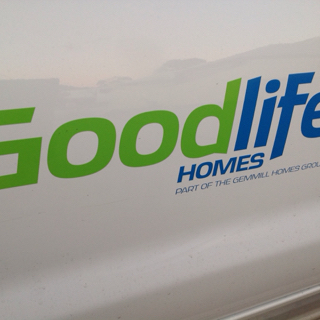Title Page
-
Document No.
-
Audit Title
-
Client / Site
-
Conducted on
-
Prepared by
-
Location
-
Personnel
AS/NZS 2067 Requirements
AS/NZS 2067-2008 Requirements
-
As per AS/NZS 2067, there are minimum safety requirements in a switchroom to ensure a safe area is maintained for both electrical operation & electrical workers.
Electrical
-
Thermal-image the switchboard. Is there evidence of major heat spots?
-
No access available to live components of any voltage?
-
Is there adequate ventilation for battery or UPS compartments?
Earthing
-
HV ONLY - Earth cables minimum 35mm in diamater?
-
LV ONLY - Earth cables minimum 25mm in diamater?
-
Earthing system has at least 2 connected earth stakes?
-
Are all metallic parts in the switchroom bonded to earth?
-
All metallic exposure guards earthed?
Housekeeping & Safety
-
Is there sufficient labelling warning of electrical risks? (i.e. "DANGER - HIGH VOLTAGE AUTHORISED PERSONS ONLY"
-
Evidence of water ingress to the room?
-
Is there evidence of oil spills, fires or smoke in the switchroom?
-
Is there evidence of any damage to doors, windows, walls or ceiling?
-
HV ONLY: Switchroom doors have crash bars fitted and operational?
-
Doors lock securely to prevent unauthorized access, open outwards?
-
Egress paths from the switchroom are safe, unobstructed?
-
Fire extinguisher is of type B(E) or AB(E) and is in date?
-
Has the 24-hour switchroom temperature average exceeded 35 Degrees Celsius?
-
Are fire-rated walls identified and labelled "FIRE RATED WALL DO NOT PENETRATE"?
-
Is there LVR rescue kit in the room, is it correctly sign-posted, and are components in date?
Misc
-
Are there any further issues in the switchroom that need rectification (i.e. Lighting, ventilation, messy areas)?
National Construction Code Requirements
National Construction Code Requirements
-
As stipulated in AS/NZS 2067 Section 5.5, electrical switchrooms shall comply with the requirements of the Building Council of Australia's National Construction Code (NCC). BCA Class 8 buildings are used as a guide.
-
Do all egress paths have battery-backed exit lighting?
-
Is there sufficient emergency lighting in the switchroom?
-
Is there an exit within 20m of all points in the room?
-
Is the external area to the escape door free from blockages (i.e. vehicles, gardens, etc) within 1 metre, either existing or potential?
AS/NZS 3000 Requirements
AS/NZS 3000 Requirements
-
As per AS/NZS 3000, there are minimum safety requirements in a switchroom to ensure a safe area is maintained for both electrical operation & electrical workers.
General Safety
-
Is there minimum 600mm clearance between the all electrical (open) panels and other obstructions (such as other panels, walls, fences, pits)?
-
Is there a secondary egress path for boards with capacity over 800A, length >3m or fault current of >15kA?
-
Is the board in a location where smoke or fire could impact egress from a building?
-
Are the seals around the switchboard suitable to contain smoke and fire in the event of a failure (minimum IP5X)?
-
Switchboard is not in a hazardous area?
-
Fire panel operational and fault-free?
Electrical
-
Is the MEN point correctly marked and secure?
-
Earths identified & correctly labelled?
-
Are all isolation points clearly marked?
-
Have all RCD circuit breakers tested within the last 12 months?
-
Are all gap fillers installed securely, with no outstanding gaps?
-
Are safety services (lifts, fire, etc) separated from general power distribution?
-
As per section 7.2, it is critical that safety services are not at risk of isolation due to fault in another part of the electrical system.
-
Are dual feeds correctly labelled?
-
Have all instances of nuisance tripping (since last audit) been investigated and rectified (where necessary)?
-
Is there suitable segregation between circuits in cable tray/conduit?
-
Are cable trays secure, no rust/degradation and earthed at all non-bolted joints?
General Power
-
Are all GPO's protected by an RCD?
-
Are GPO's clean and dry?
-
Are GPO's free from damage (no cracking, switches operational)?
General Lighting
-
Is lighting sufficient in the switchroom?
-
160lux or greater is recommended for general electrical tasks.
400lux or greater is recommended for electrical maintenance work, and can be achieved by task lighting. -
Are all light fittings operational (i.e. no blown bulbs or elements)?
-
Are light fixtures secure from damage?
-
Is emergency lighting in the switchroom sufficient?
-
It is recommended that an emergency lighting level of >1lux is present. This can be achieved by using battery-backed fluoro or LED tubes, spitfires or similar fixtures.
-
Are lighting fixtures suitably earthed?
Electrical Parameters
-
Red-Earth Voltage:
-
Blue-Earth Voltage:
-
White-Earth Voltage:
-
Neutral-Earth Voltage:
-
Power Factor:
-
Blue Phase Current:
-
Red Phase Current:
-
White Phase Current:
-
Is the earth system in tact (no damage)?
-
Earth resistance?
Miscellaneous
-
Are there any other issues that need raising?
Drawings
Switchroom Drawing Set
-
Is there a folder of drawings present in the switchroom?
-
Are there red-line markups present in the switchroom drawing set?
-
Add photos of redline markups present.
-
Add a comment about the redline markups present
-
Are there red-line markups present in the DFM drawing set?
-
Add photos of redline markups present.
-
Add a comment about the redline markups present
-
Do redlines in DFM and field match?
Finalise Audit
Finalise Audit
-
Are there any Danger, Isolation, Hazard or Information tags in the switchroom?
-
If yes, please ensure you take photos of each tag (both sides).
-
Are there any other issues in the Switchroom that should be noted?
-
Ensure that this report is emailed to #######@cqu.edu.au for actioning of any outstanding items.
Sign off by auditor.
-
Switchroom checked by:
-
Signature:














